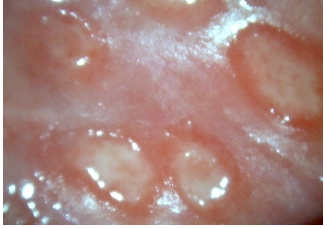Check out today’s Step 2 CK Qmax Question Challenge.
Know the answer? Post it in the comments below! Don’t forget to check back for an update with the correct answer and explanation (we’ll post it in the comments section below).
A 29-year-old G3P2 woman at 31 weeks’ gestation presents to the emergency department with a small amount of vaginal bleeding. She had been diagnosed with velamentous cord insertion by ultrasound earlier in the pregnancy. She denies abdominal pain, cramping, or contractions associated with the bleeding. Her temperature is 37.3°C (99.2°F), blood pressure is 105/68 mm Hg, pulse is 66/min, and respiratory rate is 10/min. Her abdomen is gravid but nontender. Fetal heart monitoring is worrisome for acute fetal anemia. Given the clinical picture and previous evidence of velamentous cord insertion, the attending obstetrician is suspicious of a fetal vessel rupture.
What is the best course of action?
A. Emergent cesarean section
B. Expectant management
C. Fetal umbilical blood transfusion
D. Immediate treatment with betamethasone, then cesarean section in 24 hours
E. Induction of vaginal labor with prostaglandins and oxytocin
———————–
Want to know the ‘bottom line?’ Purchase a USMLE-Rx Subscription and get many more features, more questions, and passages from First Aid, including images, references, and other facts relevant to this question.
This practice question is an actual question from the USMLE-Rx Step 2 CK test bank. Get more Step 2 CK study help atUSMLE-Rx.com.





D
My first thought is A. This is because of suspected fetal vessel rupture. I’m thinking that the fetus will quickly exsanguinate.
A
A
We don’t have time to wait for 24 hrs.
Immediate C/S would be the choice to prevent complications.
C
A
The correct answer is A. Velamentous cord insertion is the aberrant insertion of fetal vessels between the chorion and the amnion rather than into the chorionic plate. This occurs in 1%-2% of singleton pregnancies and more often in twin gestations. Velamentous cord insertion is associated with cord compression, poor fetal growth, thrombosis, placenta previa, and vasa previa. In vasa previa, some of the fetal vessels cross the region of the internal os ahead of the presenting part, which significantly increases the risk of fetal vessel rupture. In the event of a fetal vessel rupture, there is the immediate risk of fetal exsanguination. The fetal distress caused by the acute anemia necessitates emergent delivery by cesarean section to prevent fetal demise.
B is not correct. This fetus is obviously in significant distress. Expectant management would not be indicated and would almost certainly result in fetal demise.
C is not correct. Fetal umbilical blood transfusion is a therapeutic option in chronic anemia of a fetus due to Rh incompatibility. However, blood transfusion is not an accepted treatment for acute fetal anemia due to vessel rupture. In this setting, blood transfusion would likely result in continued fetal hemorrhage and would not prevent fetal demise by itself.
D is not correct. In nonemergent premature births, delaying delivery by 24 hours to allow for administration of betamethasone results in increased lung maturity and decreased risk for the complication of respiratory distress syndrome. However, in this case, the fetus is unlikely to survive an additional 24 hours in utero. Therefore, immediate cesarean section without administration of betamethasone is the appropriate treatment.
E is not correct. At 31 weeks’ gestation, induction of labor with prostaglandins and oxytocin would take many hours to result in labor, if it were successful at all. Given the acute distress of the fetus, immediate cesarean section is indicated.
Great explanation . Thank you .
awesomeness
Have you ever considered creating an e-book or guest authoring on other websites? I have a blog centered on the same topics you discuss and would really like to have you share some stories/information. I know my visitors would value your work. If you’re even remotely interested, feel free to send me an e mail.
Elliot
Patrick